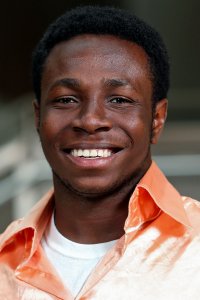SSRP Abstract
Artificial Intelligence for “Battle Line”

Student: Love Ayinde ’23
Research Mentor: Sean McCulloch (OWU Department of Mathematics and Computer Science)
This summer, Dr. McCulloch and I worked on understanding and advancing the use of Artificial Intelligence (AI) in a card game called Battle Line. At the start of the summer, the program already played a strong game against its human opponents, but it mostly “gave up” when it had a nearly 0% chance of winning a flag, making it easier for the opponent to win. We added into the AI strategy a concept known as the “You-curve” which helped remove that deficiency. With the new improvement, my mentor and I played the game using both the old and new strategies 20 times each, and we found that our work made the game more challenging, improving the 5%-win rate of the original program to 35%.
This summer, Dr. McCulloch and I worked on understanding and advancing the use of Artificial Intelligence (AI) in a card game called Battle Line. This game has similarities to Poker and Solitaire. The game program was constructed using Java by my predecessor students. The game program allows us to play against the computer and also against another person. At the start of the summer, the program already played a strong game against both new players and former world champions. We worked to improve the game strategy of the computer program in order to improve its win rate. We figured out that the existing game strategy mostly “gave up” when it had a nearly 0% chance of winning a flag, making it easier for the opponent to win. Therefore, we decided to add into the strategy a concept known as the “You-curve,” which helped remove that deficiency. The “You- curve” makes decisions by adjusting the probability of winning a flag using a quadratic equation. The curve gives a higher value when the final probability is very close to 0 and 1 and gives very low value when the final probability is around 0.4 to 0.6. With the new improvement, we tested both the old and new strategies 20 times each, which improved the 5%-win rate of the original program to 35%. We also started modifying the program to allow the computer strategy to play against itself or another computer strategy. We hope this modification can be completed in a future summer.
